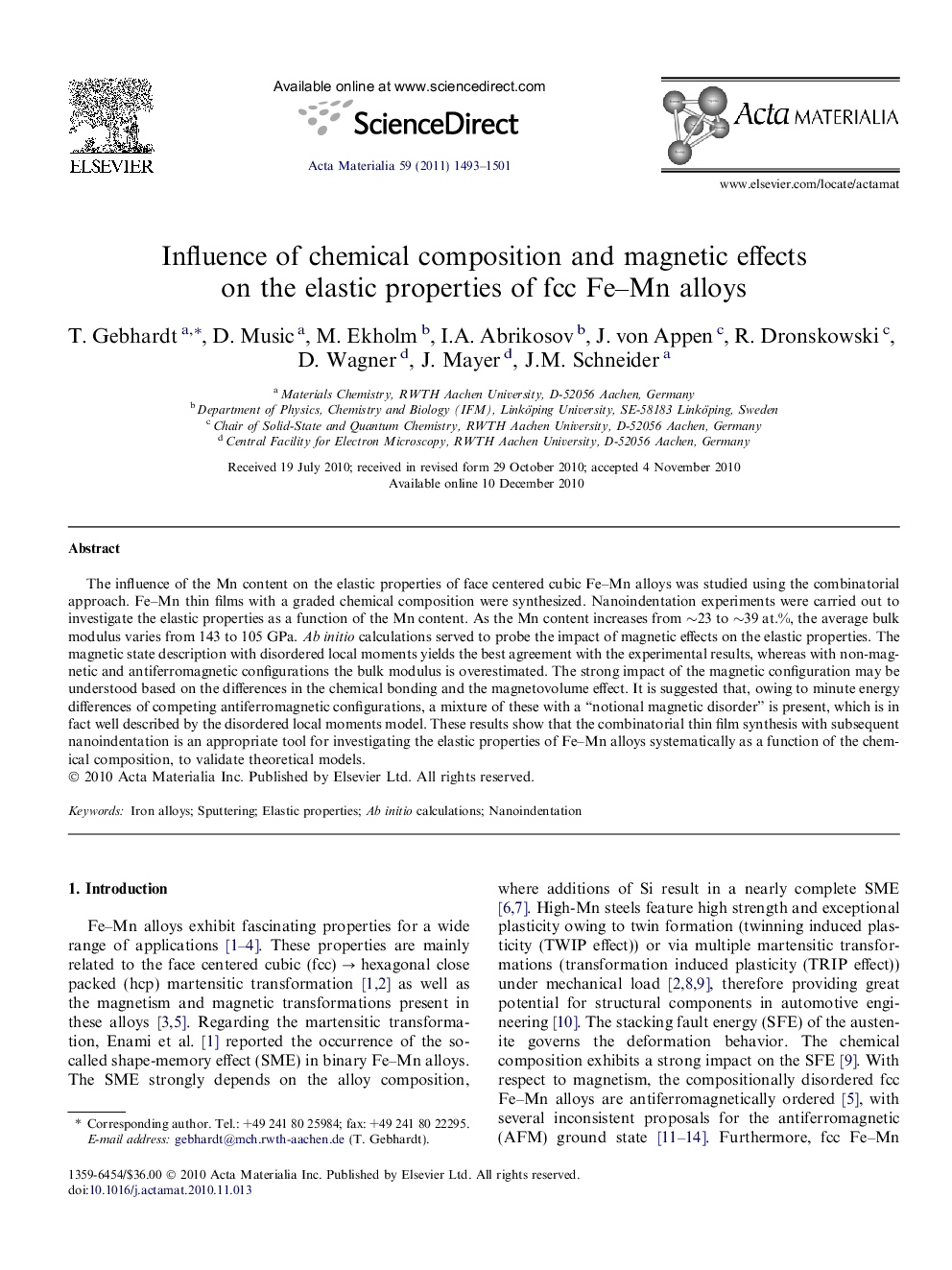| Article ID | Journal | Published Year | Pages | File Type |
|---|---|---|---|---|
| 10620604 | Acta Materialia | 2011 | 9 Pages |
Abstract
The influence of the Mn content on the elastic properties of face centered cubic Fe-Mn alloys was studied using the combinatorial approach. Fe-Mn thin films with a graded chemical composition were synthesized. Nanoindentation experiments were carried out to investigate the elastic properties as a function of the Mn content. As the Mn content increases from â¼23 to â¼39Â at.%, the average bulk modulus varies from 143 to 105Â GPa. Ab initio calculations served to probe the impact of magnetic effects on the elastic properties. The magnetic state description with disordered local moments yields the best agreement with the experimental results, whereas with non-magnetic and antiferromagnetic configurations the bulk modulus is overestimated. The strong impact of the magnetic configuration may be understood based on the differences in the chemical bonding and the magnetovolume effect. It is suggested that, owing to minute energy differences of competing antiferromagnetic configurations, a mixture of these with a “notional magnetic disorder” is present, which is in fact well described by the disordered local moments model. These results show that the combinatorial thin film synthesis with subsequent nanoindentation is an appropriate tool for investigating the elastic properties of Fe-Mn alloys systematically as a function of the chemical composition, to validate theoretical models.
Related Topics
Physical Sciences and Engineering
Materials Science
Ceramics and Composites
Authors
T. Gebhardt, D. Music, M. Ekholm, I.A. Abrikosov, J. von Appen, R. Dronskowski, D. Wagner, J. Mayer, J.M. Schneider,
